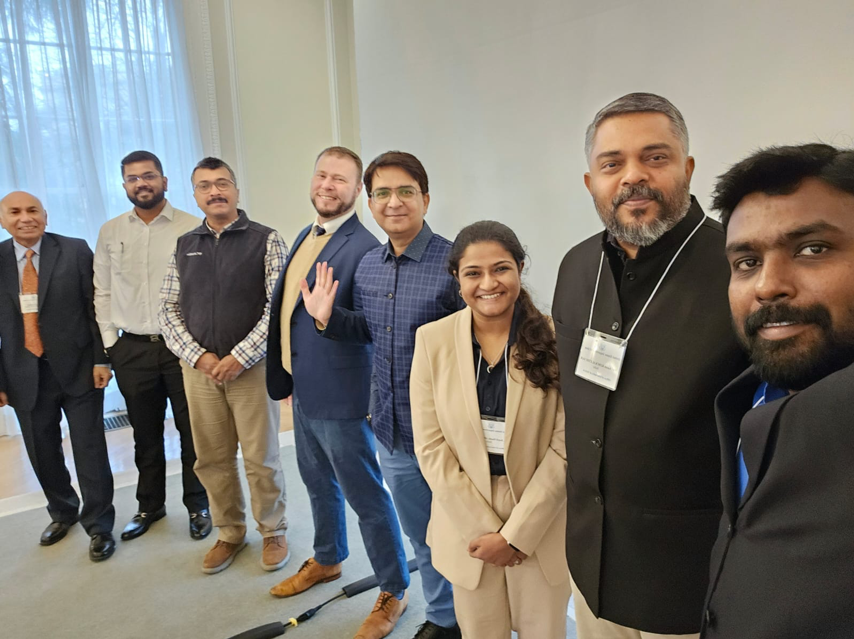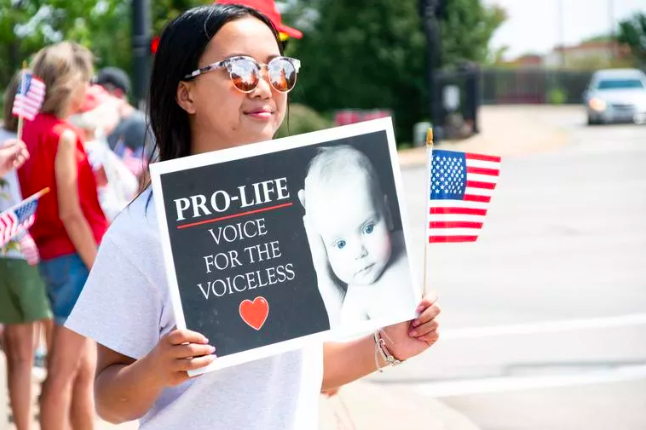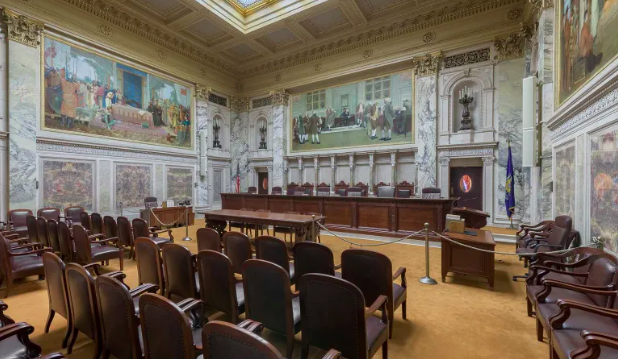Last summer, the Religious Freedom Project offered dissertation fellowships for students exploring the sources, development, and consequences of religious freedom. The project supported five fellows in exploring the relationship between religious liberty and other fundamental freedoms; its importance for democracy; and/or its role in social and economic development, international diplomacy, and countering violent religious extremism. Cornerstone asks the fellowship winners to share about their research and findings.
By: Dustin Gamza
On August 28, 2015, on the outskirts of Dushanbe, Tajikistan, a 23-year-old student was detained and beaten into a coma by police who were trying to force him to shave his beard, which they saw as a sign of extremism. The student, Umar Bobojonov, later died, and on September 4, retaliatory attacks took place across Dushanbe, including at the police department. Nine police officers and 13 attackers were killed. The interior ministry blamed the incident on a “terrorist group,” but others claimed the attacks were led by individuals who were angered by Bobojonov’s death at the hands of local police and the government’s decision to ban the Islamic Renaissance Party (IRP), which also occurred on August 28.
This case is one of many in Central Asia that illustrates the inherent irony behind government policies regulating religious belief and practice. Like their counterparts in other predominantly Muslim Central Asian states, Tajik authorities have increasingly sought to create a politically inert religious product by subsidizing one interpretation of Islam while repressing others. Yet, as individuals react to shifts in religious regulation over time, it is becoming clear that religious regulation may have adverse effects and unforeseen consequences. As John Kerry noted in the introduction to the Department of State’s 2014 Religious Freedoms Report, “Those who misuse the terms ‘terrorist’ and ‘extremist’ are not fooling anybody, and trying to dictate an artificial conformity of religious expression is not a prescription for harmony. It is a prescription for frustration, anger, and rebellion. And we have learned time and again that if citizens are denied the rights to practice and express their beliefs peacefully, they are far more likely to explore other and more often than not dangerous alternatives.”
A puzzle arises out of this. Does religious regulation work? Regimes engage in religious regulation for two reasons: to coopt religious identity as part of the nation-building or nation-strengthening process, and/or to stifle or harness the political potential of religion. However, in regimes that do choose to regulate religion, we still witness variability in outcomes, both in terms of religio-national cohesion and in terms of the political influence of religious identity. What are the direct effects of religious regulation on national identity and political behavior, separate from any influence regulation might have on religious participation?
Many studies that attempt to understand the results of religious regulation on politics make two assumptions that do not hold in Central Asia or much of the Muslim world. First, with some important exceptions, studies on religious regulation often place focus solely on repression of religion (restrictions on the selection or profession of certain religious beliefs and practices) or subsidies for religion (institutional, fiscal, or political benefits to particular religious organizations). The reality in Central Asia is more complicated; despite formal separations of religion and state, in each case alongside religious restrictions, there are subsidies. These subsidies can be general (supporting Islam or religion) or selective (targeting one particular interpretation of Islam, or a set of beliefs and behaviors the state hopes to prop up as official Islam).Thus, religious regulation needs to be re-conceptualized as two-dimensional, consisting of combinatory strategies of subsidy and repression.
Second, some research on religious regulation assumes that establishing a monopoly is tantamount to establishing homogeneity within a single religion. However, if one considers the extent to which the dominant religion is heterogeneous in terms of the diversity of beliefs and practices that encompass its followers in a given country, then competition becomes possible despite the establishment of a religious monopoly. And in fact, in most parts of the Islamic world, including Central Asia, Islam is more accurately characterized as heterogeneous (or what some might refer to as syncretic—that is, derived from blending various religious schools of thought and cultural traditions).
In 2015, I spent six months doing field research in Kyrgyzstan. I conducted interviews with many imams, Muftiate officials, and members of minority interpretations of Islam, as well as government and NGO officials who dealt with issues relating to religious rights, the relationship between religion and state, and religious extremism. I also collected legal data, allowing me to begin tracking shifts in religious regulation and enforcement of restrictions on religion over time in Central Asia. As an indicator of politicization, I have been building a dataset of protest in Kyrgyzstan, Kazakhstan, Tajikistan, and Uzbekistan from 1991 through the present. This data allows me to begin testing how shifts in different styles of religious regulation over time influence mobilization.
Based on this preliminary field research, I argue that how religious regulation restructures religious competition within countries may have direct effects on the structure of competition within Islam. This then influences whether or not there is a clash between national and religious identity, the level of political salience of religious identity, and perhaps most importantly, what forms this politicization takes.
My initial data suggests that when the state is supportive of religion in general, without imposing harsh repression, religious regulation can both promote competition among those espousing or adhering to different interpretations of the dominant religion, and enable the government to retain some legitimacy as a neutral arbiter among competitors; individuals thus have less incentive to endorse or engage in political behavior that is either anti-government or violent. Conversely, when the state begins to create an exclusive religious monopoly, propping up one state interpretation of Islam with subsidies while imposing high levels of repression upon others, religious regulation can both eliminate competition among those espousing or adhering to different interpretations of the dominant religion and undermine the state’s ability to represent itself as a neutral arbiter among competitors; individuals thus have more incentive to endorse or engage in political behavior that is anti-government and violent.
My time in Kyrgyzstan, and the graciousness of my interview subjects, provided me with great insight into the motivation behind religious regulation and how it affects individuals in their day-to-day lives. During an interview with an imam in Uzgen, I asked what it means to be a Muslim, and what it means to be Kyrgyz. The interview was cut short, and he told me he had something he wanted to show me. A short car ride and a few minutes later, I found myself sitting at a table with all the elders at a feast celebrating the men in the town who had completed the Hajj earlier that year. The imam told me that rather than talk about what it means to be a Muslim and Kyrgyz, he wanted to show me through hospitality.
Whatever actions the government takes to support religion, or restrict it, Muslim identity remains a vibrant part of day-to-day life and national identity in Central Asia. How political this identity becomes, and how this politicization of identity manifests itself—into peaceful activism and protest, or violent riots; into civil society and unifying identity, or propensity to be targeted by extremist groups for recruitment—is at least in part dependent on how Central Asian states choose to manage religious
freedom.
Dustin Gamza is a Ph.D. candidate in political science at the University of Michigan and was a summer 2015 doctoral fellow with the Religious Freedom Project.
This piece was originally authored on March 18, 2016 for the Religious Freedom Project at Georgetown’s Berkley Center for Religion, Peace, and World Affairs.
THE RFI BLOG

Be More Faithful, Become More Resilient: An Invitation to Religious Institutions

How Soccer Reveals Different Meanings Of ‘Secular’ In France And The US

RFI’s Ismail Royer Meets with Delegation from India

Protecting the Unborn, Mothers, and Medical Ethics: The Stakes of Arkansas’ Amendment

Wisconsin Supreme Court Punishes Catholic Charities for Serving Everyone
CORNERSTONE FORUM

Public Bioethics & the Failure of Expressive Individualism

Religious Liberty in American Higher Education

Scotland’s Kate Forbes and the March of Secularism

70 Years of Religious Freedom in Sweden: Prospects and Challenges


